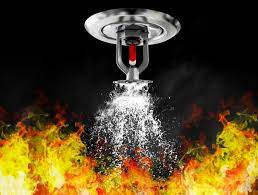 June 2023
June 2023
Sprinkler systems and a decrease in smokers have had the greatest contribution to a drop-off in multi-family building fires according to a study released by the National Fire Protection Association. These two factors have increased fire suppression capabilities while reducing the number for fires.
Most common causes of fire relate to human actions or a failure to act. One example of this is the use of disposable lighters to ignite cigarettes. Annual deaths attributable to fire have dropped by 88 percent between 1994 and 2018. During this period people took greater care in their use of lighters while the technologies for creating fire evolved. For disposable lighters the ignition point and flame height have changed. Candles stand more upright.
The role of smokers and smoking in the creation of fires has changed. Today’s smokers typically smoke fewer cigarettes than smokers of earlier generations. More are likely to step outside their home before lighting up.
LED lighting has played a role as it has replaced incandescent and halogen bulbs which can get extremely hot and ignite fires. Artificial candles and gas fireplaces are less likely to be causes of fire than real candles and wood burning fireplaces.
Flammability of home furnishings is a major cause of fire. Bedrooms and living rooms are the most dangerous because synthetic fabrics and polyurethane foam padding, used in mattresses and furniture, burn more quickly than natural materials such as cotton and wool.
High-rise dwellers have requirements for sprinkler systems, fire alarms and smoke detectors. They benefit from these technologies and trends more than single-family homes.
The study reports a decline in the average death rate from fires; from six fatalities per 1,000 fires in an average year to 3.4 fatalities per 1,000 fires in the most recent decade.
The vast majority of fire-related deaths occur in the room where a fire originates. Building technology to contain fire, known as compartmentalization, and automated sprinkler systems are credited with containing fires to a single object or room of origin.
Emerging concerns in fire risk are linked to an aging population and household furnishings. People living alone, particularly seniors or those with disabilities, are at greater risk. In the event of a fire, the survival rate is greater if there is someone else on the scene and able to alert them, help them evacuate or to control a fire.
 While residential fires have become less common, they are more likely to be deadly than in the past.
While residential fires have become less common, they are more likely to be deadly than in the past.







